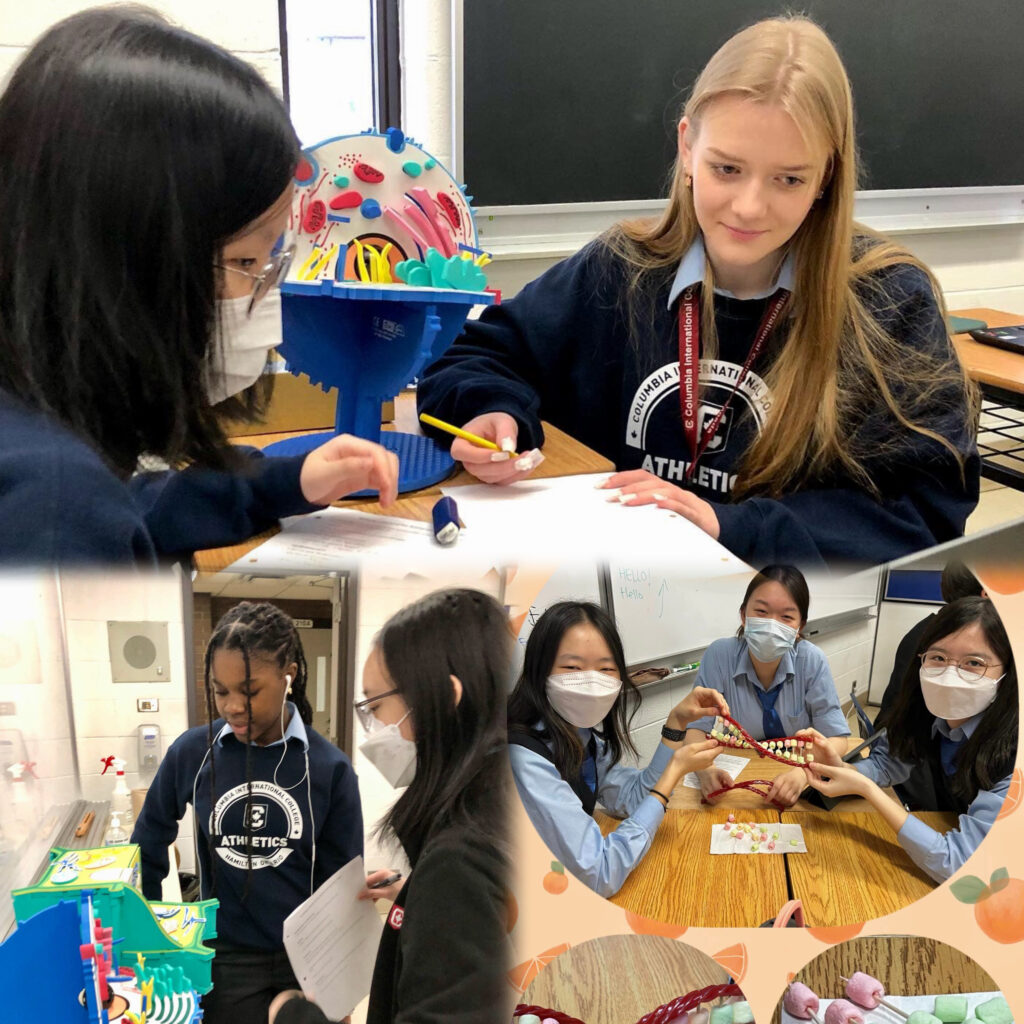
Columbia International College (CIC) advocates for experiential learning, engaging students through simulated experiments, immersive tasks, field trips, and group discussions.
Experiential learning has many benefits:
- Students apply theoretical knowledge to real-life situations, deepening their understanding and memory;
- Students develop practical skills and hands-on abilities;
- Students enhance their creative thinking and innovation abilities;
- Students strengthen their teamwork and interpersonal communication skills;
Here’re several examples of experiential learning at CIC, where you can witness how CIC teachers uphold their commitment to first-class education and help students enjoy the experiential learning, bringing positive impacts to their future.
Building 3D Organelle Models
Learning science through 3D foam building – students in Mr. Nucciarelli’s Grade 10 science class are working in small groups to assemble different parts (called organelles) of the animal cell.
There are many cell organelles to learn about and each organelle has a unique purpose in the cell. Building a model means they can use their hands to literally put the cell together – it just doesn’t get more hands-on then that!
Along each step of the building process, students answered simple questions about each organelle to help reinforce what they have learned about in pervious classes this week.
DNA Can Be Delicious
Yes, DNA can be delicious! Grade 11 students are creating DNA models with Twizzlers and marshmallows.
Edible DNA model is tasty way to reinforce the students’ knowledge of DNA structure and base paring as they start the genetics unit.
Looker, Runner and Builder
Students in High Achiever Club are building their teamwork skills, one LEGO block at a time. They are having a blast playing Looker, Runner, Builder LEGO games that take collaboration to a whole new level.
- The “Looker” can visually inspect the LEGO model and convey its appearance to the “Runner”.
- The “Runner” relies on information relayed by the “Looker” to communicate back to the “Builder”.
- The “Builder”, on the other hand, is not allowed to speak, receives guidance from the “Runner” and proceed with the Lego construction.
Brewing Our Own Ginger Ale
WOW, Grade 12 Biology students are learning the science of fermentation by brewing their own ginger ale and root beer from scratch.
Are these old-fashioned, naturally carbonated drinks tasty? Watch the video and see for yourself.
Geometry Dance
Grade 11 students are taking leaps forward in geometry learning like never before. Led by Mrs. Dana, the class is performing a Transformations Dance to review the graphs of the parent functions and their transformations.
They are using choreographed movements to embody reflections, translations, and rotations.



